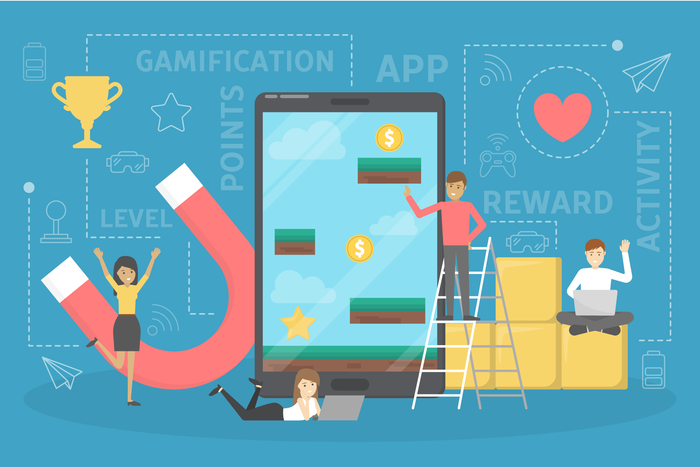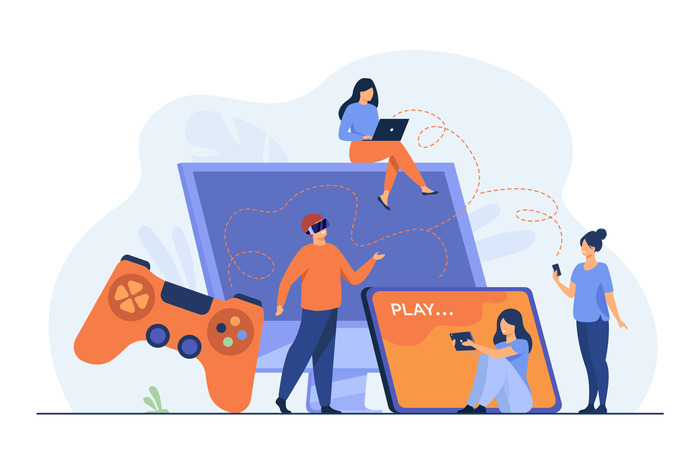Offering something unique to customers is crucial across all industries, and one effective way to achieve this is through different gamification techniques. Gamification is all about adding a gaming element to the way a business operates.
This means appealing to the customers by providing game elements, including rewards and challenges. Doing so inspires customers to stay on your site or app as they attempt to meet different levels within the game, claiming rewards as they complete challenges.
Subsequently, by merging marketing elements with enhanced customer interaction, businesses can elevate their operations and significantly boost engagement.
Boosting Loyalty and Engagement
When it comes to digital marketing, gamification is a powerful tool. Not only is it effective for improving loyalty and engagement, but it offers several other benefits. Through looking at examples from several industries, this article will take a closer look at some examples of why gamification has so much power.
Gamification in Online Entertainment
Gamification is widely embraced across various forms of online entertainment to engage and motivate users. Streaming giants like Netflix and Disney+ enhance viewer interaction through interactive quizzes and achievement badges.
In addition, social media platforms such as Instagram and TikTok incentivize user participation with badges for completing challenges and rewards for increasing followers.
Meanwhile, for music lovers, music streaming services like Spotify keep users engaged with features like listening streaks and playlist challenges, adding an element of gamified enjoyment to music discovery. And that’s not all.
Today, there are also numerous online education platforms where learners can make their experience more engaging through progress tracking and course completion badges. And for enthusiasts of mobile games like Candy Crush, players find themselves captivated by the allure of advancing through levels and earning rewards.
Gamification is also present in online casinos, offering points and rewards systems in loyalty programs. Players earn points from real-money deposits and move through levels to unlock different types of rewards that could include free spins, cashback, and bonus cash.
These gamified elements make the experience more enjoyable and rewarding for users while also boosting loyalty and engagement for the platforms.
Driving Sales in Retail and E-commerce
Gamification is a strategic tool for retailers and e-commerce platforms to stand out in a highly competitive market. These platforms are further examples of industries that use gamification to drive sales and enhance customer loyalty.
Nowadays, customers are constantly looking for special offers or bargains when shopping, and retailers can help satisfy their client’s needs in different ways.
For example, retailers often offer loyalty programs where customers can earn points for making purchases, writing reviews, or referring friends. By accumulating these points, clients can claim discounts, exclusive products, or other rewards, thus keeping customers engaged and encouraging business.
Motivating Fitness Goals through Gaming Apps
Fitness apps often employ gamification methods to motivate users to achieve their health goals. Through daily challenges, progress tracking, and social sharing, these apps create a sense of accomplishment and community. In addition, users can earn badges and rewards for reaching milestones, such as completing a specific number of workouts or achieving a personal best.
On top of that, depending on the service, there are usually monetary rewards available. For example, health insurance providers will give discounts if users reach specific goals.
Once users have earned points, they can then be exchanged for discounts on fitness gear, healthy food products, or entries into prize draws. This blend of virtual and real-world rewards provides additional motivation to stay active, creating a tangible link between their fitness efforts and real-world benefits.
Learning through Competitions
A lot of successful gamification is based on offering challenges such as missions and quests. This is often used at online casinos, but also on learning apps where learners are given different challenges to try and achieve.
No matter which platform, the challenges offered will then have some kind of rewards at the end. Often, this is extra points, free lives, or access to the ad-free version of the app, though this will depend on the type of platform.
Challenges, competitions, missions, or quests can cover a range of different things. They can be simple tasks like playing a game, finishing a test, learning a certain number of words, creating content on social media, and so much more. Doing so makes the platform that much more engaging.
Similarly, offering leaderboards across platforms engenders a sense of competition. People want to be seen as doing well or coming at the top. And this is especially the case if there are prizes at stake. Leaderboards work well across all types of platforms, including casinos, games, learning apps, and more.
Overall, it is evident that gamification is a powerful strategy to keep customers interested and engaged across a wealth of different industries. It can also help attract new customers by making the user experience more enjoyable and rewarding while encouraging existing customers to remain loyal.


